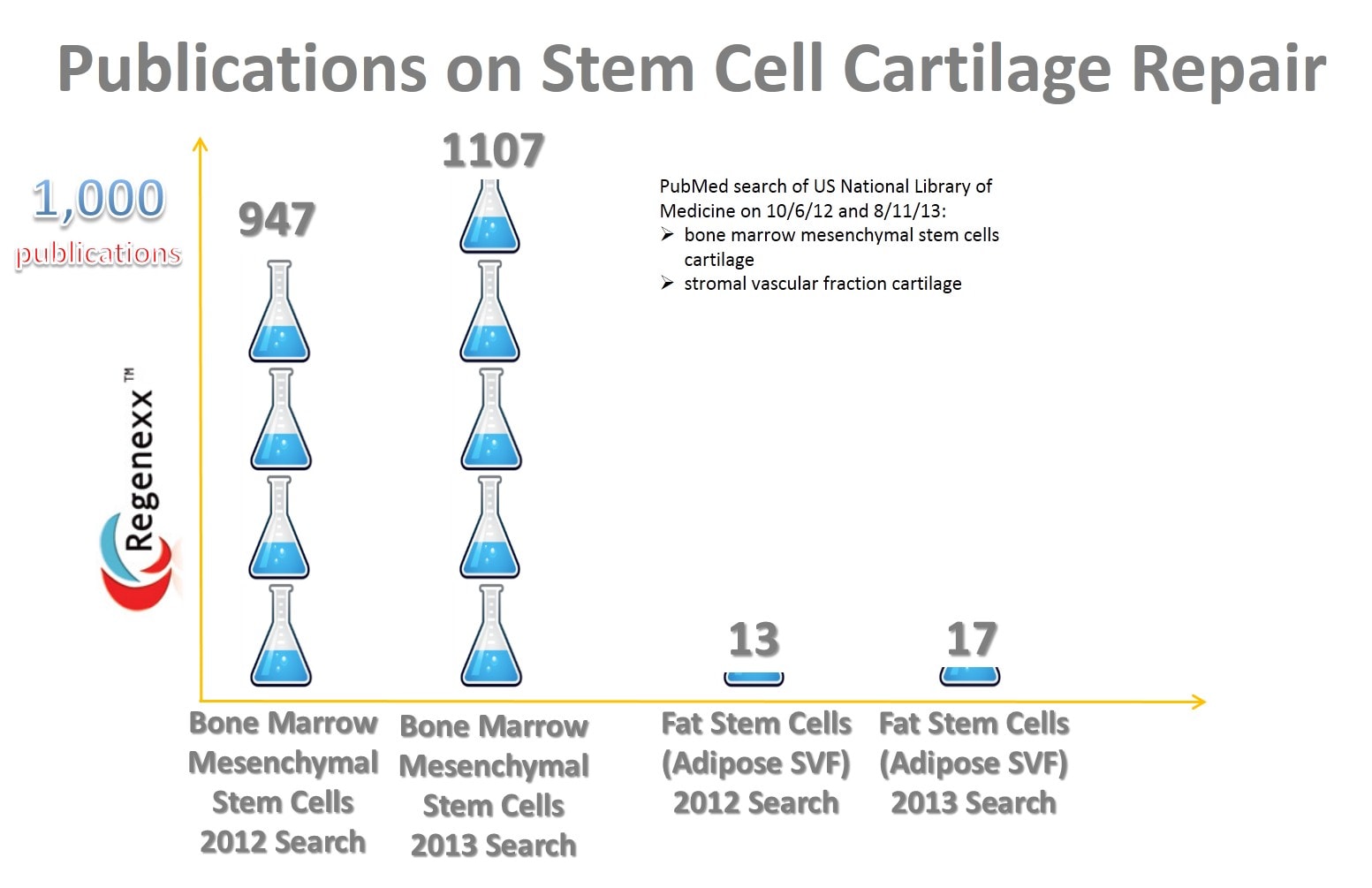An Update on Using Fat Stem Cells to Treat Arthritis: The Data is Still Very Weak
Last year, I created an infographic on the different stem cell types used in orthopedic stem cell procedures. At the time, I ran several searches of the U.S. National Library of Medicine to give readers an understanding of what was published on animal models of cartilage repair. To review, scientists try animal models first to validate that medial treatments work and to better understand why. At that point, there was a massive amount published on bone marrow stem cells used to treat arthritis and very little published on fat stem cells. Since I still frequently get this question from patients and docs, I thought it was time to revisit this bone marrow versus fat stem cell research download. So has a year made a huge difference? Have fat stem cells begun to catch up and close the gap on their huge orthopedic research deficit? Not so much. Above is a search I ran yesterday versus the search in May of 2012. While there are now more than 1,100 research articles published on using bone marrow stem cells in cartilage repair (human and animal), there are a paltry 17 on using fat stem cells for the same purpose. The upshot? Comedian John Lovett used to make up a bunch of silly facts on Saturday Night Live and then end it with his famous catch phrase, “Yeaaah, that’s the ticket….” Well, when it comes to the statement that we have enough research to be using fat stem cells as a primary source of cells to treat arthritis, I’d have to say, “Yeaaah, that’s the ticket….” This week I’ll rerun the other bone marrow versus fat stem cell research downloads. However, as of yesterday, if you believe that fat stem cells are the way to go for treating arthritis, I’ve got some deeds in my trunk to land in Florida to sell you…water front and very moist…oh wait, I guess that’s swampland… Stay tuned…

NOTE: This blog post provides general information to help the reader better understand regenerative medicine, musculoskeletal health, and related subjects. All content provided in this blog, website, or any linked materials, including text, graphics, images, patient profiles, outcomes, and information, are not intended and should not be considered or used as a substitute for medical advice, diagnosis, or treatment. Please always consult with a professional and certified healthcare provider to discuss if a treatment is right for you.

